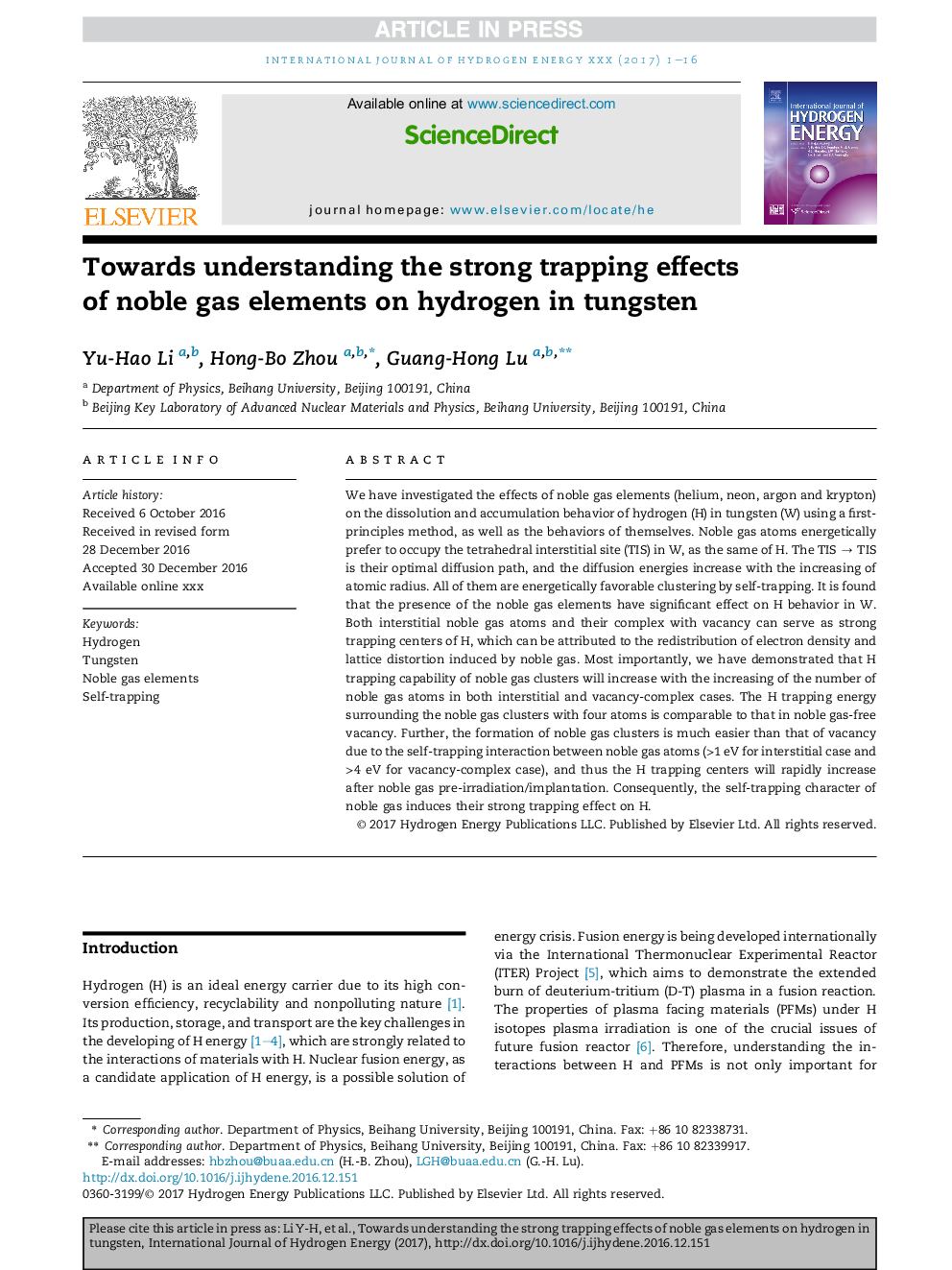| Article ID | Journal | Published Year | Pages | File Type |
|---|---|---|---|---|
| 5146130 | International Journal of Hydrogen Energy | 2017 | 16 Pages |
Abstract
We have investigated the effects of noble gas elements (helium, neon, argon and krypton) on the dissolution and accumulation behavior of hydrogen (H) in tungsten (W) using a first-principles method, as well as the behaviors of themselves. Noble gas atoms energetically prefer to occupy the tetrahedral interstitial site (TIS) in W, as the same of H. The TIS â TIS is their optimal diffusion path, and the diffusion energies increase with the increasing of atomic radius. All of them are energetically favorable clustering by self-trapping. It is found that the presence of the noble gas elements have significant effect on H behavior in W. Both interstitial noble gas atoms and their complex with vacancy can serve as strong trapping centers of H, which can be attributed to the redistribution of electron density and lattice distortion induced by noble gas. Most importantly, we have demonstrated that H trapping capability of noble gas clusters will increase with the increasing of the number of noble gas atoms in both interstitial and vacancy-complex cases. The H trapping energy surrounding the noble gas clusters with four atoms is comparable to that in noble gas-free vacancy. Further, the formation of noble gas clusters is much easier than that of vacancy due to the self-trapping interaction between noble gas atoms (>1 eV for interstitial case and >4 eV for vacancy-complex case), and thus the H trapping centers will rapidly increase after noble gas pre-irradiation/implantation. Consequently, the self-trapping character of noble gas induces their strong trapping effect on H.
Keywords
Related Topics
Physical Sciences and Engineering
Chemistry
Electrochemistry
Authors
Yu-Hao Li, Hong-Bo Zhou, Guang-Hong Lu,
